10 Best Attribution Tools & Platforms for 2022 [Guide]
How to choose the best attribution tool for your business, based on your role, company size, and objective.
How to choose the best attribution tool for your business, based on your role, company size, and objective.
In digital marketing, attribution is the practice of deciding what gets credit for the final conversion. An attribution tool is the technology that makes this happen, but choosing the right one is no easy task. They all have different strengths and specialties and different price points, so before diving in, you should understand the context in which they operate.
This is where Segment can help. We make it easier for you to try attribution, analytics, and optimization tools because you don’t have to integrate each SDK one by one. You can collect customer data with our API, integrate one SDK, and then flip a switch to integrate new tools.
In this blog post, we’ll provide a framework for evaluating attribution tools, cover the top players in the market, and discuss which tools might be best for you, based on your role, company size, and objective.
If you already know quite a bit about the attribution space, skip down to our rundown of individual tools.
Before we dive into the attribution tools themselves, let’s take a step back to learn a bit about what they are, what they do, and where they fit within the larger marketing tech stack.
Attribution tools help you determine the success of your digital advertising campaigns and other marketing channels. They sit between your marketing tools and your website, app or other owned endpoints to determine which acquisition sources are driving conversion and provide you with a detailed, full-story picture of your customer journey.
Attribution tracking is how attribution tools collect data on customer touchpoints. Typically, their tracking mechanism is based on cookies, tags, or UTM (Urchin Tracking Module) code.
After data collection, attribution tools use it for attribution modeling, which determines the role of touchpoints in driving the final conversion. For example, is the Instagram ad that kicked off the customer journey more important than the paid search ad that ultimately led to a conversion? Attribution modeling will help you answer these types of questions.
Dedicated attribution tools usually use multi-touch attribution, which provides a broader look at the customer journey as a whole. General analytics tools, like Google Analytics, and ad platforms, like Facebook, can’t do multi-touch attribution, so they rely on first- or last-touch attribution, which only looks at singular, limited touchpoints. In the example above, first-touch attribution would give all the credit for the final conversion to the Instagram ad, while last-touch would credit the paid search ad.
Mobile attribution tracking involves collecting data from mobile touchpoints and tying customer actions at these touchpoints to the marketing campaign that created the engagement. Many multi-touch attribution tools are capable of mobile attribution tracking, though some are mobile-only and others desktop-only.
In short, an attribution software solution provides visibility into the black box that is modern digital marketing. Attribution tracking has become increasingly complex because digital marketing is now able to leverage multiple touchpoints across devices and platforms. For many large-scale digital advertisers, attribution has become a key strategy because it provides a more complete picture of the customer journey.
But it’s a lot to handle. Modern marketers are faced with a choice between two options:
Create their own expensive and time-consuming multi-touch attribution model
Rely on the ad platforms and analytics tools they already use for attribution
The first option was too much of an investment for most, while the second option provided an incomplete view of what was really going on.
So attribution tools stepped in to make true multi-touch attribution attainable. They make sense of the fragmented and complex landscape of modern digital marketing so marketers can make data-informed decisions.
When evaluating an attribution tool, we tend to think about three primary criteria:
How many integrations the attribution tool has. Generally, the more integrations, the better. At a minimum, your attribution tool should have an API that integrates with your CRM, email provider, online ad platforms, and SEO tools. Make sure it has more integrations than you need right now so it can accommodate your team as your business grows.
How many devices the tool covers. Some attribution tools specialize in certain devices (e.g., mobile-only), while others cover a broad spectrum (e.g., mobile, desktop, TV). Depending on your business model and budget, you may need to prioritize specialized attribution tools over more general ones.
How secure the platform is. Your attribution tool will be home to your end users’ data, and any breach of that data will have serious ramifications. If your business takes privacy seriously (and it should) you'll want to choose a tool with best in class security features.
How they handle over-attribution and fraud. Fraud costs the advertising industry billions of dollars every year, and wreaks havoc on a businesses' ability to make informed, accurate decisions about their advertising. Make sure you choose a tool that takes serious steps to detect fraud and block fraudulent attribution.
Another aspect to consider is how intuitive the tool is to use. It may require implementation help from development teams, or it might be more “plug and play” and appropriate for a performance marketing or growth team. Take into account your teams’ capacity as you evaluate your options.
With those considerations in mind, we plotted out a few of the most popular attribution tools on this graph based on their number of integrations and the number of devices.

Adjust enables mobile attribution tracking for marketers by providing insight into organic installs, ad clicks, and in-app events, all with unlimited look-back. They also offer mobile analytics, audience-building, fraud prevention, and uninstall and reinstall products.
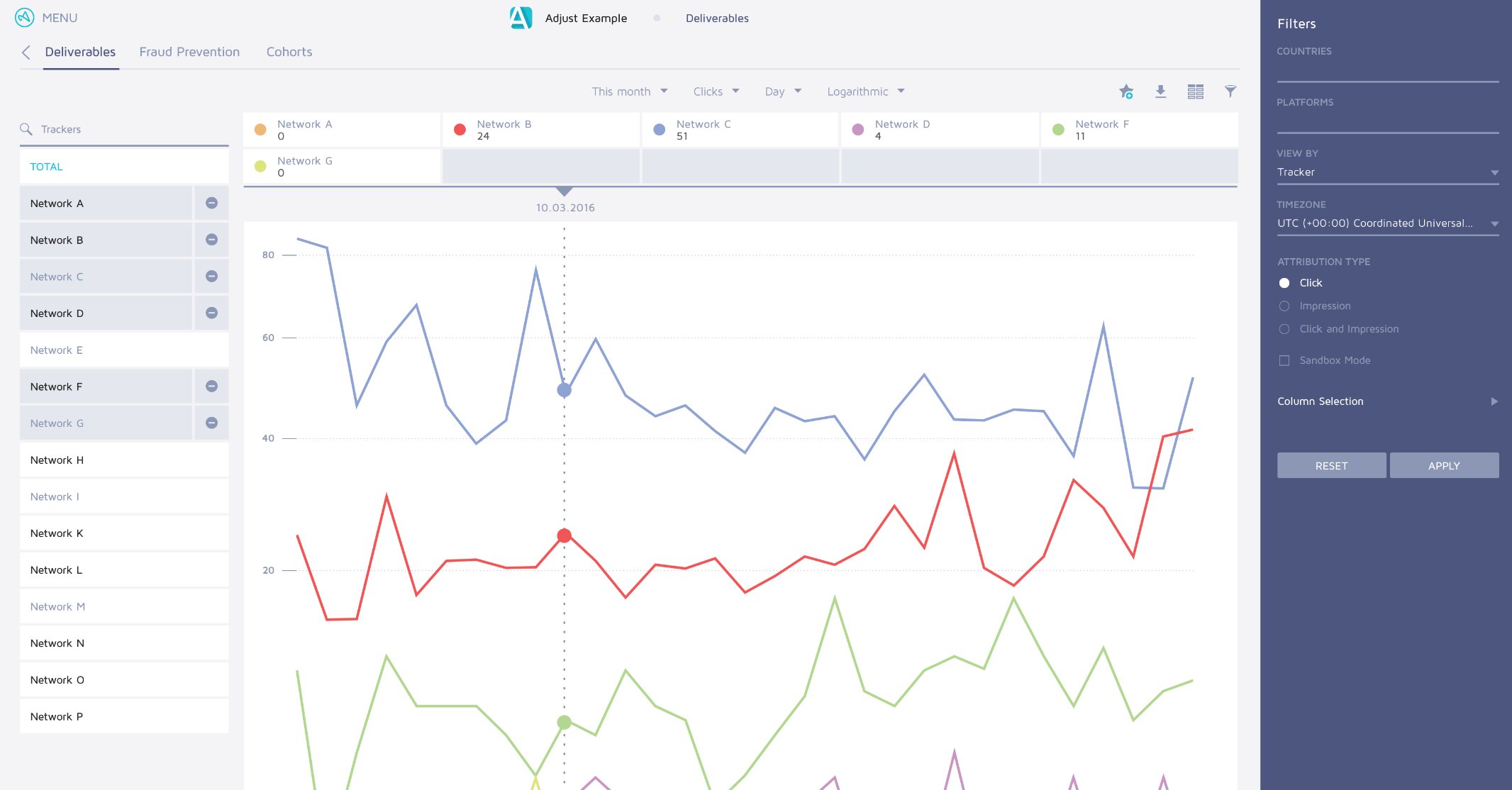
Functionality
Mobile-only
Integrates with over 7,000 partners
Supports 21 languages across 11 countries
Attributes credit across all digital and offline sources
Adjust is great for
Objective: Tying each user to the ads they interact with and preventing fraud
Role: VP Marketing, Head of Growth
Company Size: Mostly small and mid-sized businesses (SMBs) and startups
Monthly Active Users: Can support relatively low volumes
Industry: Travel, Gaming, Music, Finance, Ecommerce, Agencies, Subscription
AppsFlyer is a mobile attribution tracking platform that specializes in app-install attribution. Their technology attributes every new installation to the marketing campaign and media source that drove it using granular dashboards.
With these dashboards, you can optimize marketing performance across user acquisition and retargeting campaigns. AppsFlyer acts almost like a hybrid between application monitoring and mobile attribution, connecting app installs and performance back to marketing campaigns.
Functionality
Integrates in real-time with leading ad networks
Enables universal deep linking, fingerprinting, and secure postbacks
Syncs marketing data across thousands of integrated providers
Comprehensive compliance program & best in class security features
AppsFlyer is great for
Objective: Tying mobile installs to online marketing campaigns
Role: Performance Marketer, Growth Marketer
Company Size: Based on marketing spend, at least $1M per year
Monthly Active Users: 1K+ mobile installs per month
Industry: Gaming, Travel, Retail, Agencies, B2C
The aptly named Attribution is an enterprise-grade multi-touch attribution software with a focus on allowing marketers to see their return on ad spend. Pulling cost data from all major ad platforms, it correlates that spend to specific users or accounts and then tracks ROI from those over time. It spreads credit across all sources, including ad platforms, social channels, and organic.
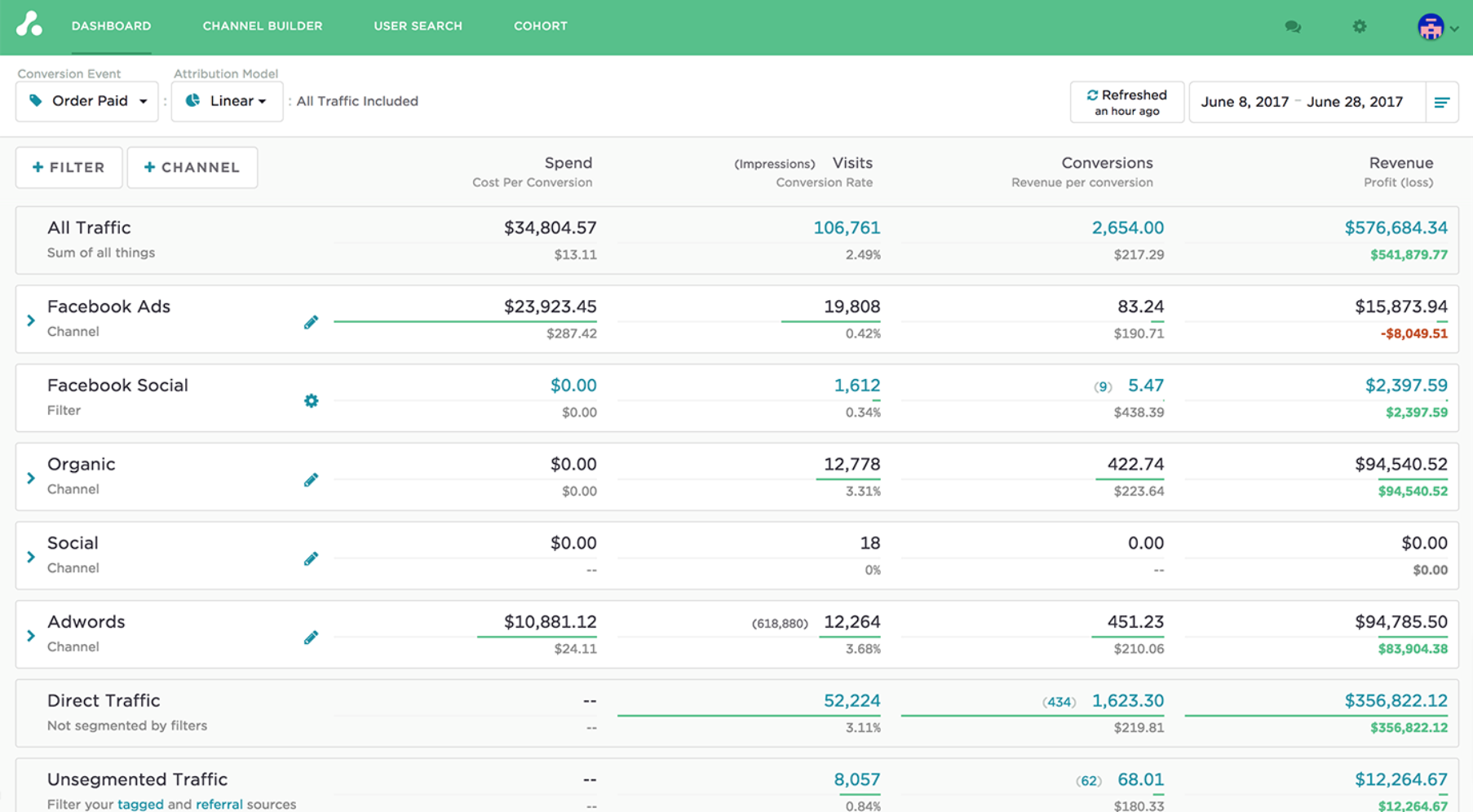
Functionality:
Tracks cohort-based lifetime value (LTV) of customers
Ranks as the attribution software with the “Fastest Implementation” according to G2
Attributes credit across all ad sources
Attribution is great for:
Objective: Tracking lifetime value across multiple ad sources
Role: Performance Marketer, Director of Analytics
Company Size: Recently moved to enterprise-grade but has a history with SMBs and startups
Monthly Active Users: Can support relatively low volumes
Industry: Ecommerce, SaaS
Branch Metrics is a mobile marketing analytics platform that supports cross-platform and cross-channel attribution with contextual deep links. That means it stitches together all fragmented identifiers across the web and in apps so marketers can have full-funnel measurements based on stage, tag, campaign, or feature.
Branch integrates with ad networks, email service providers, and analytics/marketing tools, allowing you to send in-app content to users and track interactions with that content accurately.
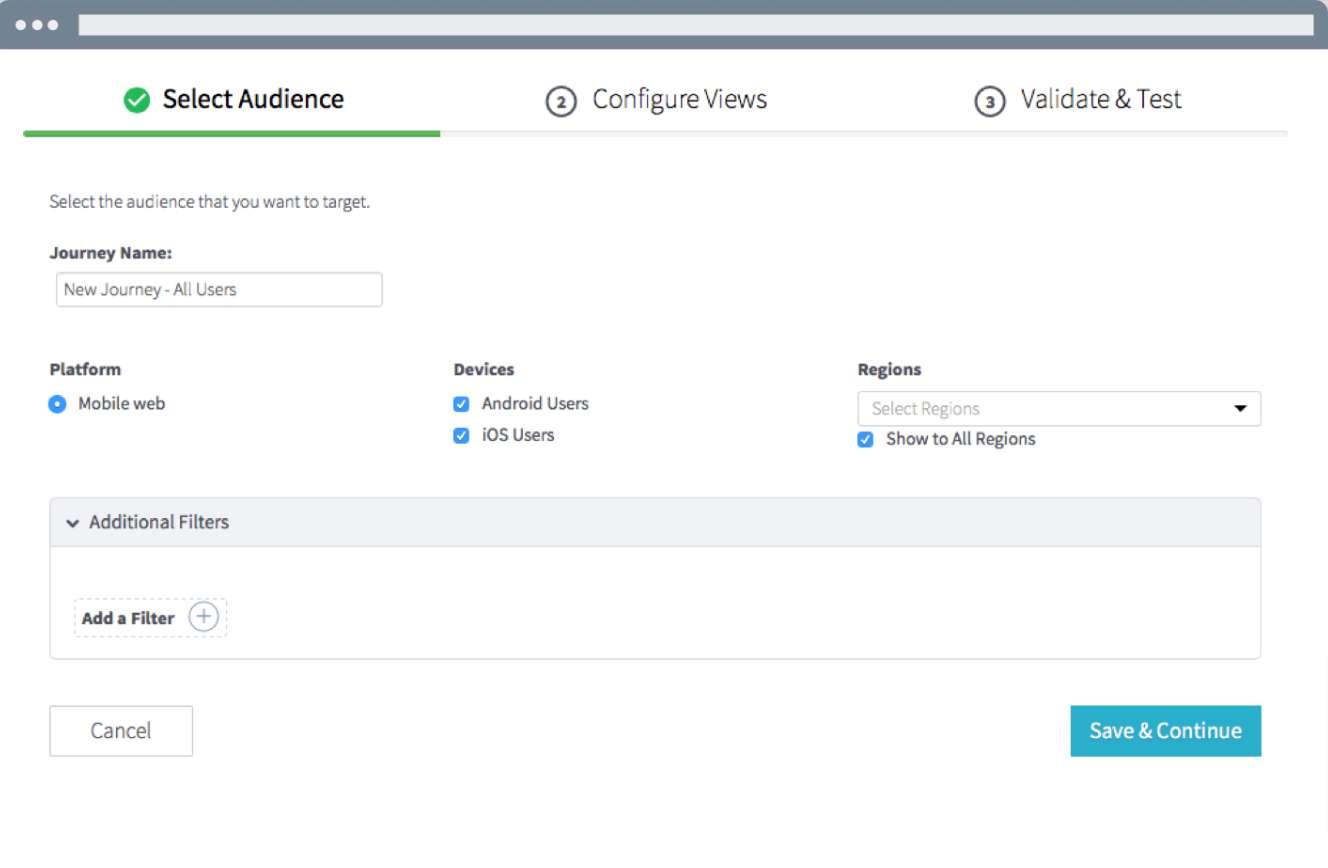
Functionality:
Does contextual deep-linking. A deep link is any web link that has characters after the backslash. For instance, https://segment.com/blog/COVID-tech-stacks is a deep link, but segment.com isn’t.
Has influencer analytics
Provides a suite of in-app features, like onboarding, app-to-app linking, and more
Branch Metrics is great for:
Objective: Linking platforms to supercharge your app growth
Role: Growth Marketer, Director of Analytics
Company Size: Startup, mid-market, and enterprise
Monthly Active Users: Any
Industry: Service, Ecommerce
Dreamdata.io is a B2B attribution and revenue analytics tool that gathers, joins, and cleans all revenue-related data in order to present a transparent, actionable analysis of what drives B2B revenue.
This enables companies to understand B2B attribution, LTV of ads, content marketing ROI, benchmark growth, predict revenue, and decide what efforts to scale next.
Functionality:
Multi-touch, account-based attribution tool.
Insights into your marketing and sales funnel based on the revenue value of closed deals or value per pipeline stage.
Enables deep understanding of ROI of paid efforts like Google Ads, Facebook Ads, etc
Provides clear attribution of your B2B content marketing initiatives.
Dreamdata is great for:
Objective: Understand what drives B2B revenue
Role: Performance Marketer, Growth Marketer, VP/Director of Marketing
Company Size: 50 - 1000
Monthly Active Users: Can support almost any volumes
Industry: B2B companies driven by digital traction
Kochava’s unified audience platform is a mobile attribution tool, an analytics tool, and a data management platform (DMP) all in one. It sends email, Slack, SMS, or PagerDuty alerts when key metrics change, conversion rates increase, revenue decreases, or install volumes change. It’s the only mobile attribution tool that will attribute installs without their software development kit (SDK) needing to be loaded in-app, which means it can attribute installs via cloud integration rather than being loaded into the app itself.
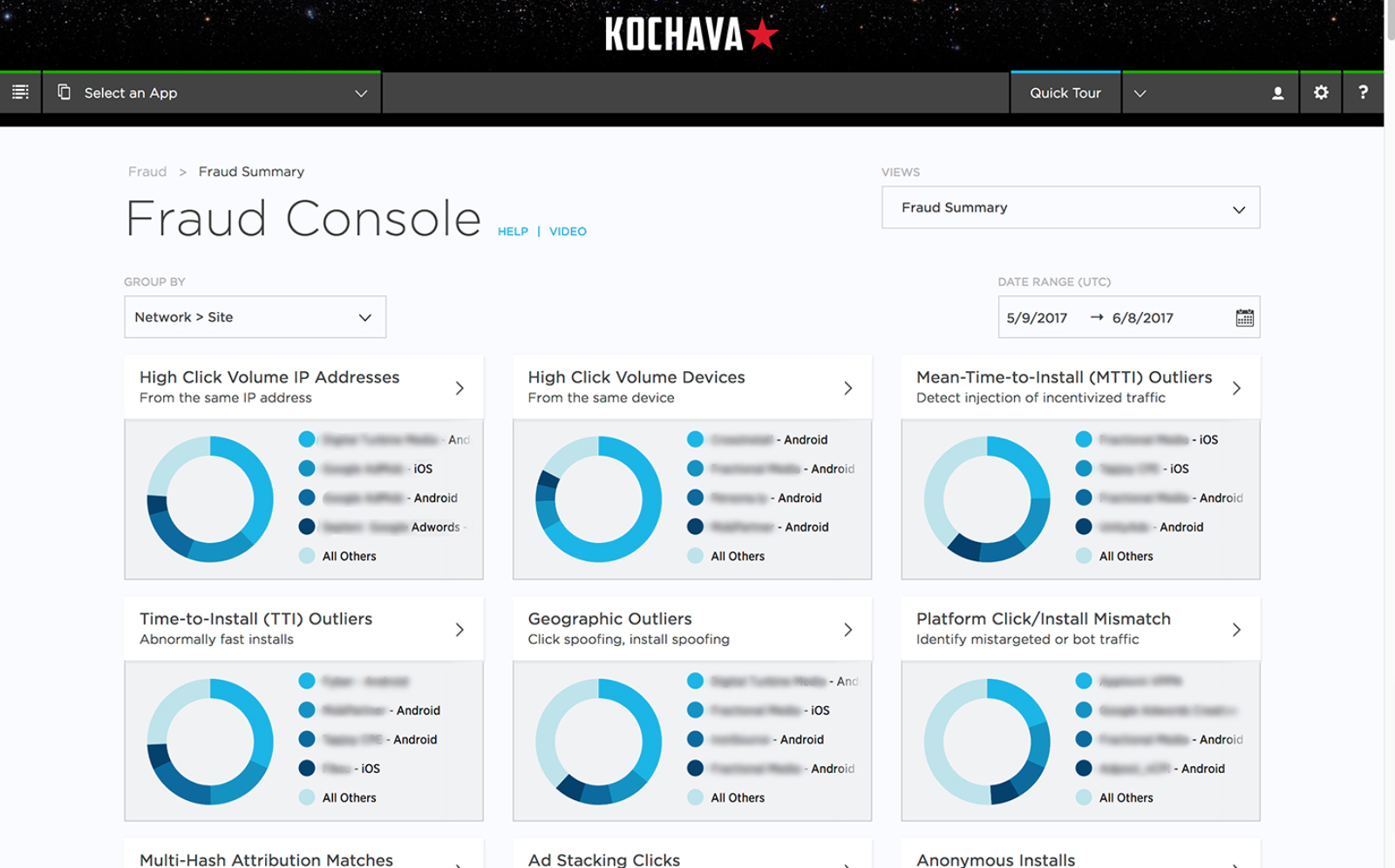
Functionality:
Mobile-only
Flags mobile ad fraud
Attributes credit across all digital and offline sources
Attributes install without their SDK needing to be loaded in-app
Kochava is great for:
Objective: Getting mobile attribution and data management platform (DMP)-level targeting in one platform
Role: VP Marketing, Head of Growth
Company Size: All sizes
Monthly Active Users: 5K+
Industry: Travel, Gaming, Music, Finance, Ecommerce, Agencies, Subscription
With the Localytics True Impact product, you can access campaign reports, implement A/B message testing, and understand where their app and marketing efforts are working and where they’re falling short. Localytics includes mobile attribution and geo-tracking, so it’s great for supporting businesses that rely on location data, such as travel companies. Though available only for mobile, it aims to help customers get more ROI out of their mobile app.
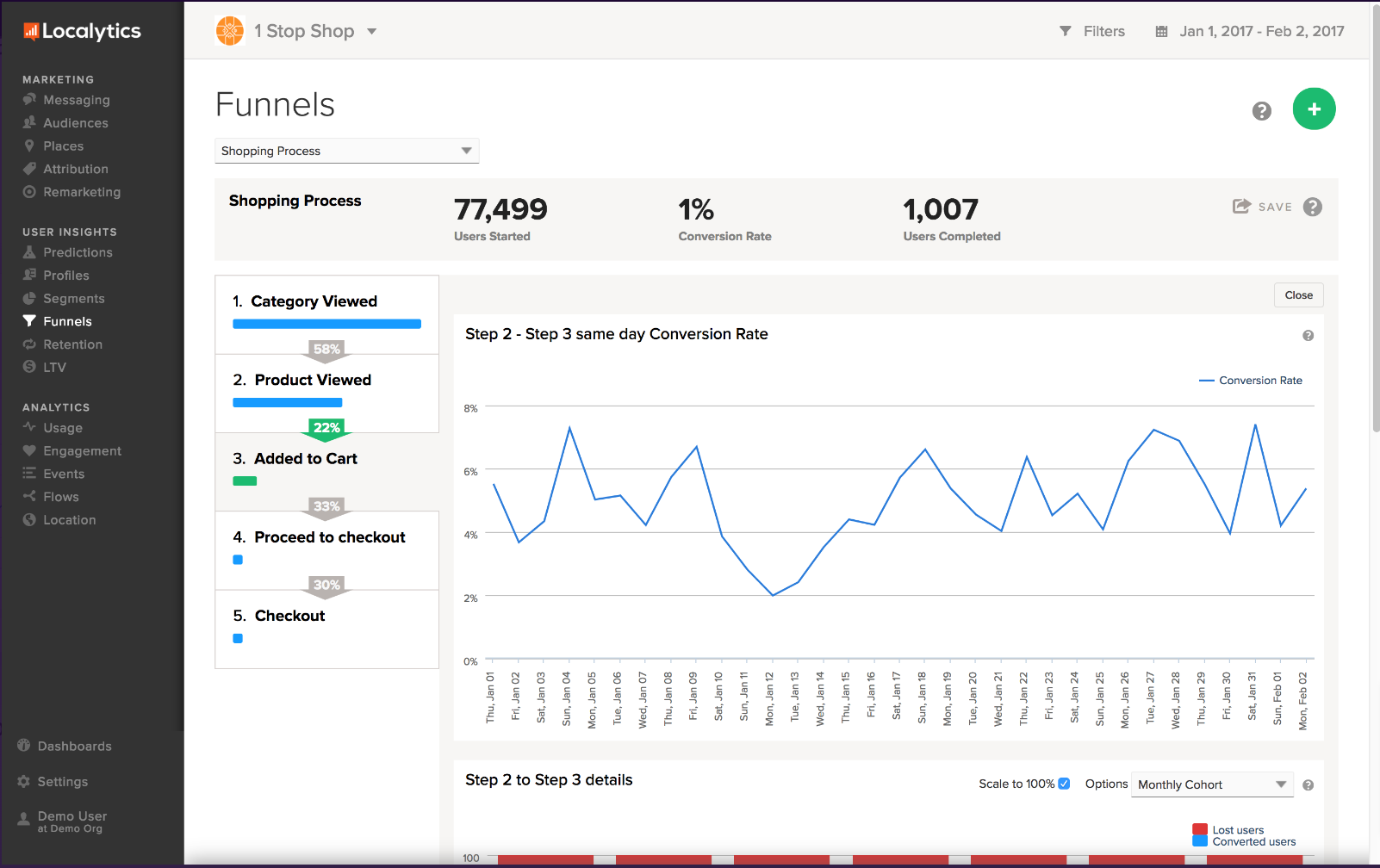
Localytics was recently bought by Upland and will be folded into their customer experience management cloud.
Functionality:
Mobile specialized
Has A/B testing
Has geo-targeting based on location
Localytics is great for:
Objective: Using mobile tracking and geo-targeting to optimize app downloads, conversions, and engagement
Role: Mobile Engagement, Performance Marketing
Company Size: All sizes
Monthly Active Users: Can support small to large scale
Industry: Travel industry and other B2C verticals
Singular is the marketing intelligence platform that unifies marketing campaign data and attribution data in a single dashboard. With over 2,000 integrations globally, partner relationships with all the major ad networks, and almost half of the top 200 grossing apps as customers, Singular’s scale unlocks intelligent insights for growth marketers, who currently optimize more than $10B in annual ad spend on the platform.
Functionality:
Has mobile and web cost aggregation
Normalizes and standardizes campaign analytics
Provides creative optimization across all media sources
Acts as a single source of truth for marketing campaigns
Provides granular ROI for every campaign, ad, creative unit, publisher, network
Singular is great for:
Objective: Connecting every dollar spent to an outcome
Role: Entire marketing team from UA manager to CMO, BI team, Finance
Company size: SMB and startups with at least five media sources
Monthly active users: Can support small to large scale
Industry: Gaming, Media, Travel, Retail, Music, Finance, Productivity
Tapstream focuses on mobile app attribution that is network-agnostic, which means it requires fewer SDK installs. They have integrations with multiple ad platforms, and their attribution platform allows for some customization.
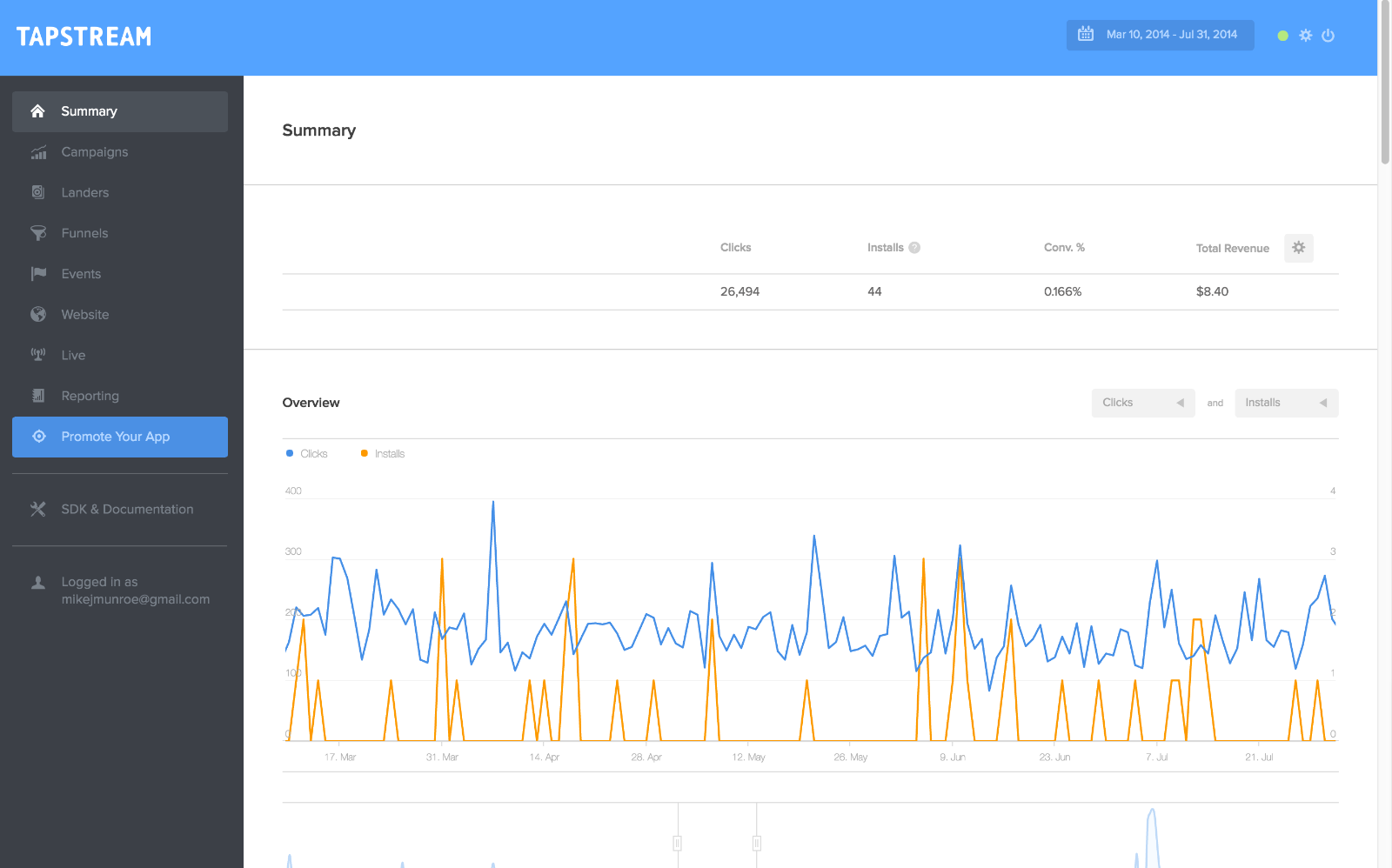
Functionality:
Mobile-only
Offers app analytics, event tracking, A/B testing, and campaign landing pages
You need to install only one SDK to support hundreds of ad networks
Has a turnkey incentivized referral program
Tapstream is great for:
Objective: Combining mobile attribution and event tracking
Role: Growth marketing and product teams
Company size: SMBs and startups
Monthly active users: Can support small to large scale.
Industry: Gaming, Travel, Retail
Nielsen Attribution is one of the few vendors with a native Facebook integration. Because it is owned by the Nielsen company (a giant in analytics), it can also leverage offline tracking integration. While this feature is more of a “nice to have” it helps to show positive ROI, particularly for retailers.
Functionality:
Integrates with offline attribution
Has a native Facebook integration
Provides access to Nielsen insights
Nielsen Attribution is great for:
Objective: Getting deeper insights into FB ads and integrating with offline channels
Role: Performance Marketer, Growth Marketer
Customer Company Size: Based on spend — at least $3M-$5M per year
Monthly Active Users: 10K+
Industry: Retail, B2C
As you can see, there is a wide variety of attribution platforms well-suited to diverse and specific needs. Many have streamlined implementation processes, but these focus on connecting your marketing tools with your website, app, or any other owned endpoint. To fully leverage the power of attribution, you need your attribution tool to work with your entire tech stack.
Segment makes it easy for you to send the attribution data across your entire customer stack, including for identity resolution. When a tool like TUNE or Branch Metrics notices that a given session, install, or event can be attributed to a given campaign, Segment can take that context and forward it to any of your connected destinations for a true omni-channel view of attribution.
To see how Segment helps with attribution, get a demo here. 👉

Our annual look at how attitudes, preferences, and experiences with personalization have evolved over the past year.